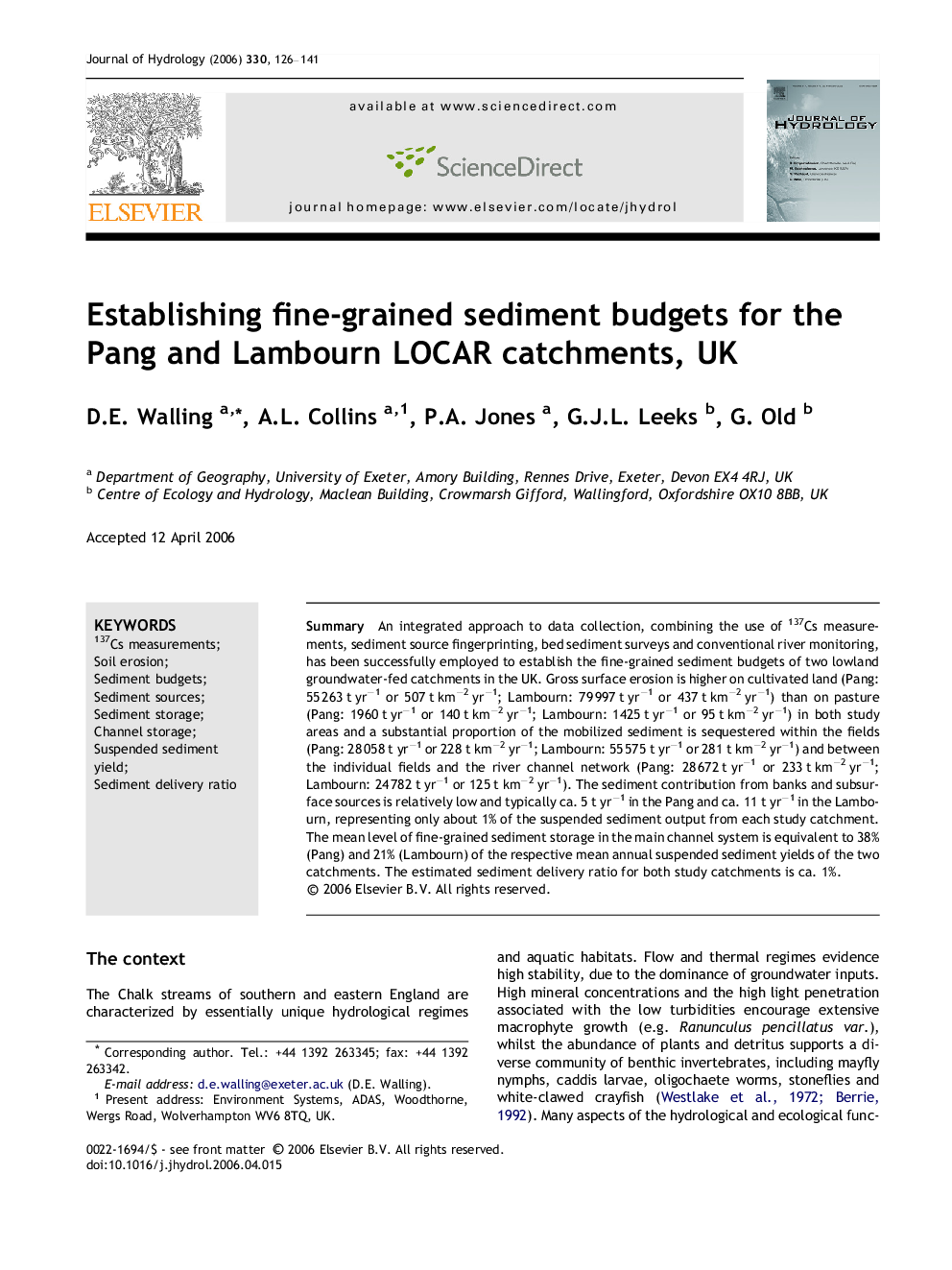| Article ID | Journal | Published Year | Pages | File Type |
|---|---|---|---|---|
| 4580528 | Journal of Hydrology | 2006 | 16 Pages |
SummaryAn integrated approach to data collection, combining the use of 137Cs measurements, sediment source fingerprinting, bed sediment surveys and conventional river monitoring, has been successfully employed to establish the fine-grained sediment budgets of two lowland groundwater-fed catchments in the UK. Gross surface erosion is higher on cultivated land (Pang: 55 263 t yr−1 or 507 t km−2 yr−1; Lambourn: 79 997 t yr−1 or 437 t km−2 yr−1) than on pasture (Pang: 1960 t yr−1 or 140 t km−2 yr−1; Lambourn: 1425 t yr−1 or 95 t km−2 yr−1) in both study areas and a substantial proportion of the mobilized sediment is sequestered within the fields (Pang: 28 058 t yr−1 or 228 t km−2 yr−1; Lambourn: 55 575 t yr−1 or 281 t km−2 yr−1) and between the individual fields and the river channel network (Pang: 28 672 t yr−1 or 233 t km−2 yr−1; Lambourn: 24 782 t yr−1 or 125 t km−2 yr−1). The sediment contribution from banks and subsurface sources is relatively low and typically ca. 5 t yr−1 in the Pang and ca. 11 t yr−1 in the Lambourn, representing only about 1% of the suspended sediment output from each study catchment. The mean level of fine-grained sediment storage in the main channel system is equivalent to 38% (Pang) and 21% (Lambourn) of the respective mean annual suspended sediment yields of the two catchments. The estimated sediment delivery ratio for both study catchments is ca. 1%.
